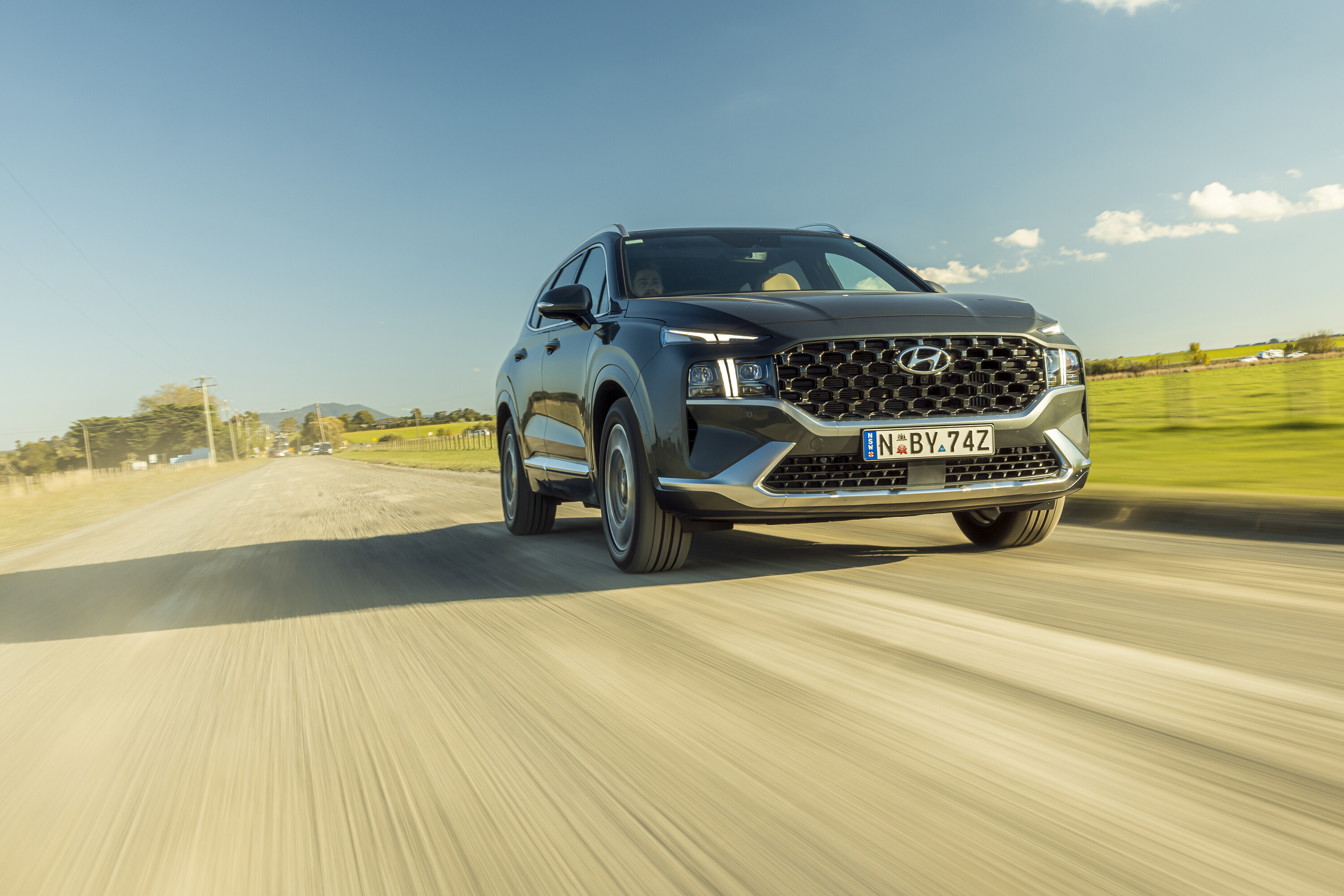
Score breakdown
Things we like
- Smart interior packaging and thoughtful touches
- Cabin refinement
- Diesel’s slick and snappy eight-speed
- Highlander’s appointments feel premium
Not so much
- Petrol V6 is thirsty
- Hybrid’s average open-road efficiency
- Curtain airbags don’t cover third row
November: New Santa Fe driven ahead of Australian launch
We’ve finally driven the new-generation Hyundai Santa Fe!
Catch our review here to see if this is the family SUV you should wait for.
2023 Hyundai Santa Fe full range review
At under 4.8 meters long, the Hyundai Santa Fe is a welterweight among large SUVs – yet canny packaging and attention to detail make this six- or seven-seater an excellent family bus.
With a mid-life facelift in December 2020 and a hybrid powertrain added to the mix in November 2022, the Hyundai Santa Fe remains fresh and relevant in a remarkably competitive market segment.
It’s a smooth and soothing SUV to drive, with the ability to get a reasonably complete specification for under $50K, up to a near-luxury Highlander that pushes the $70K envelope. Read on to find out if the Santa Fe will suit your needs.
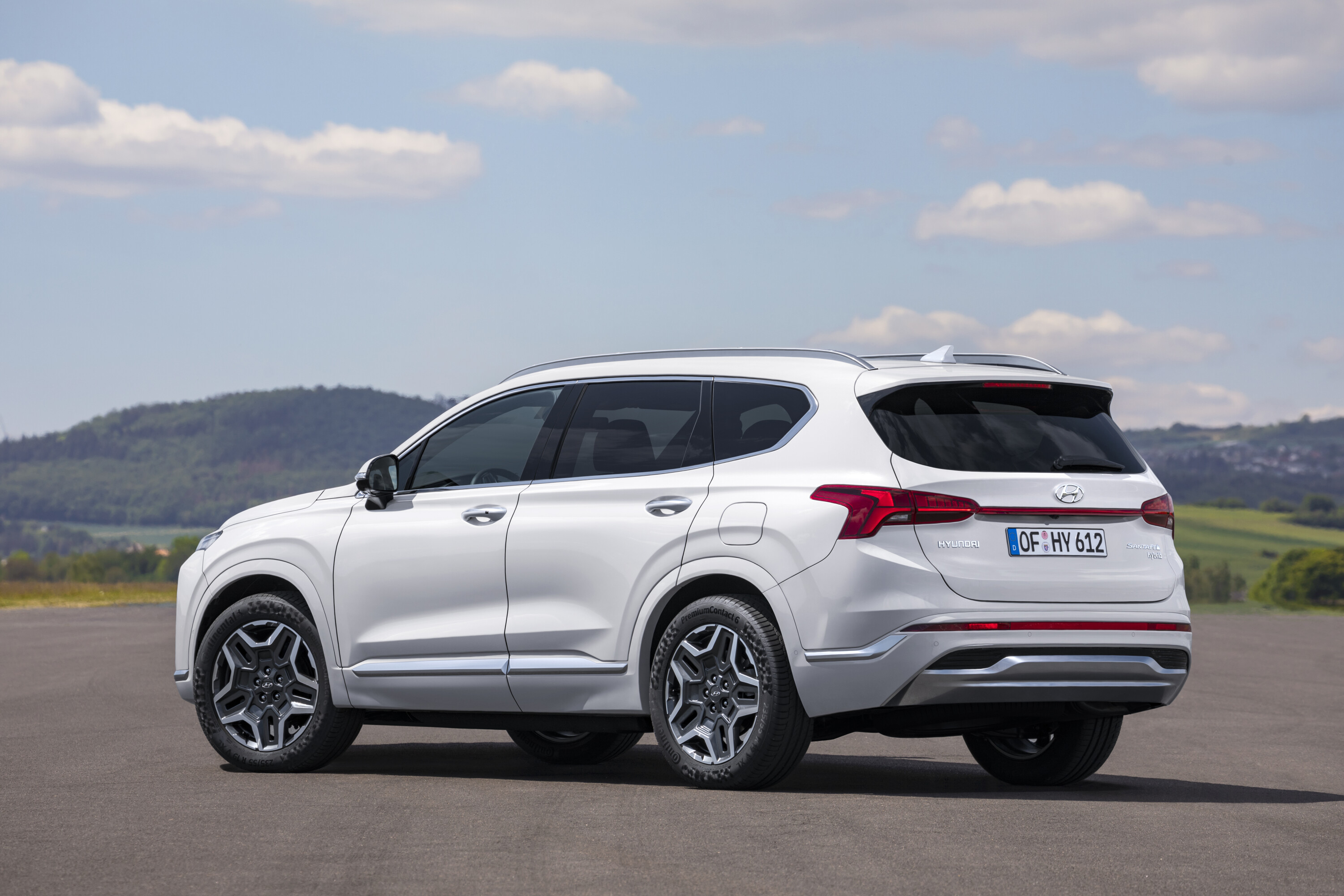
JUMP AHEAD
- Pricing
- What body styles are available for the Santa Fe?
- What features are standard in every Santa Fe?
- What key features do I get if I spend more?
- How safe is the Santa Fe?
- How comfortable & practical is the Hyundai Santa Fe?
- How much boot space does the Santa Fe offer?
- I like driving, will I enjoy this car?
- Which Santa Fe engine uses the least fuel?
- What is the Santa Fe’s towing capacity?
- How long is the warranty & what are the Santa Fe’s servicing costs?
- Which version of the Santa Fe does Wheels recommend?
- What are the Santa Fe’s key rivals?
- What might annoy me?
- What’s the infotainment system like?
- Where does Hyundai make the Santa Fe?
- Are there plans to update the Santa Fe soon?
Pricing
| Model | Pricing |
|---|---|
| Santa Fe 3.5 petrol FWD | $46,050 |
| Santa Fe 2.2 diesel AWD | $49,550 |
| Santa Fe Active 3.5 petrol FWD | $50,290 |
| Santa Fe Active 2.2 diesel AWD | $53,750 |
| Santa Fe Elite 3.5 petrol FWD | $56,500 |
| Santa Fe Elite 2.2 diesel AWD | $60,000 |
| Santa Fe Hybrid Elite | $63,000 |
| Santa Fe Highlander 3.5 petrol FWD | $63,050 |
| Santa Fe Highlander 2.2 diesel AWD | $66,550 |
| Santa Fe Hybrid Highlander | $69,550 |
| Prices listed are before on-road costs |
Premium paint costs an extra $695 across the Santa Fe range.
The Elite can be had with Cognac Brown leather upholstery for $295, and the Highlander Camel Tan Nappa leather trim for the same price.
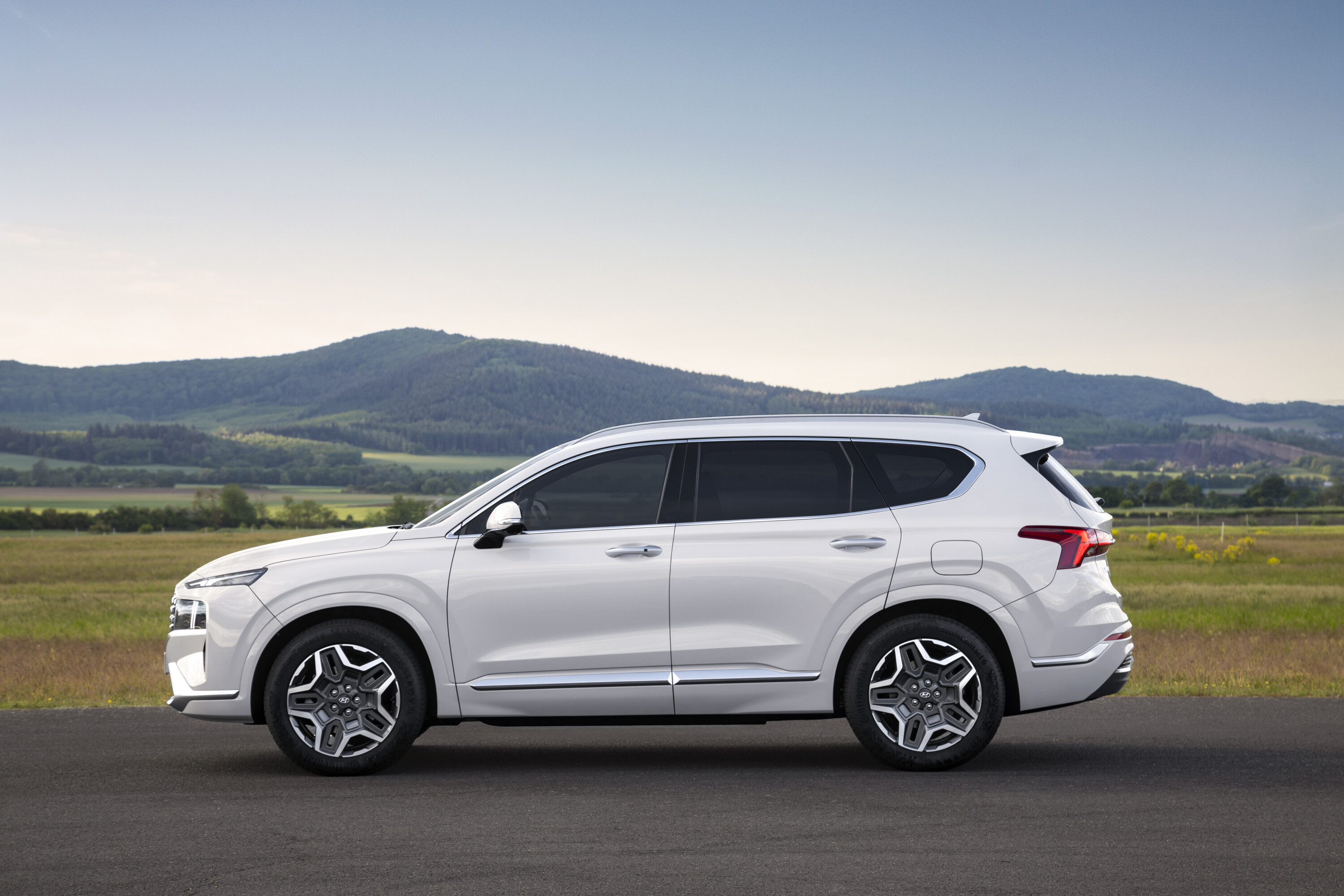
What body styles are available for the Hyundai Santa Fe?
The Hyundai Santa Fe is a five-door large SUV with seating for up to seven occupants, depending on specification.
What features are standard in every Hyundai Santa Fe?
The features listed below are standard in the entry-level model and will appear in higher-grade models unless replaced by more premium equivalent features.
| 2023 Hyundai Santa Fe standard features | |
|---|---|
| 17-inch alloy wheels | 4.2-inch instrument cluster display |
| Black grille inserts | 6-speaker sound system |
| Wireless Apple CarPlay and Android Auto | Leather-appointed steering wheel and gear selector |
| Reversing camera | Electronic parking brake |
| LED headlights | Third-row USB charge ports |
| Rear parking sensors | Black vinyl upholstery |
| LED daytime running lights | Manual-adjust front seats with 2-way power lumbar for driver |
| Wireless phone charger | Manual air-conditioning |
| 8.0-inch infotainment touchscreen | Heated rear windscreen |
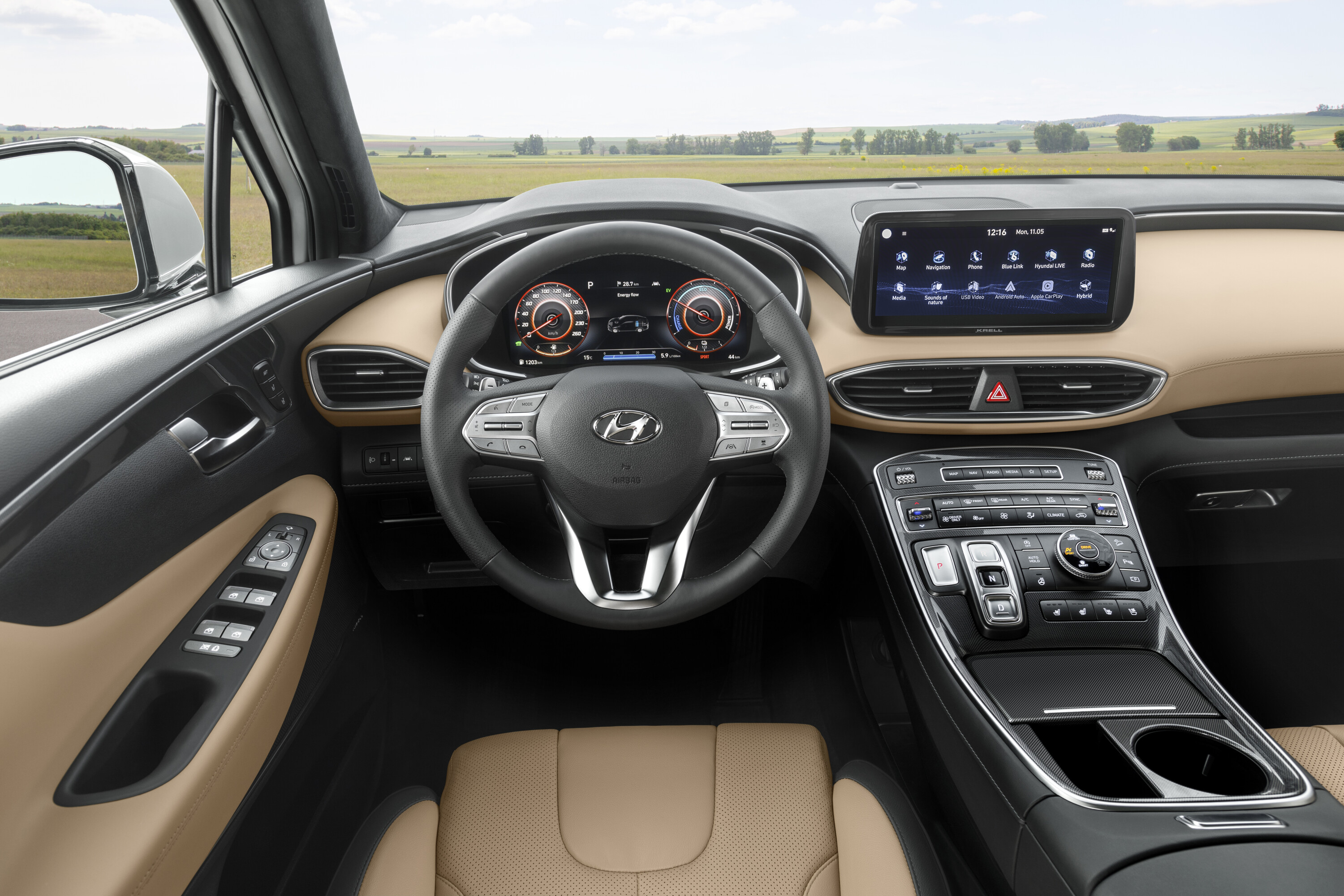
What key features do I get if I spend more?
Cruising up through the Santa Fe range makes for a much more premium experience.
The two lower grades are more than serviceable, but not particularly special. A larger price jump to the Elite and Highlander is worth it for the extra luxury. Plus, the upper-spec cars are also available with an efficient petrol-electric hybrid powertrain.
The Hyundai Santa Fe Active adds:
| 2023 Hyundai Santa Fe Active features | |
|---|---|
| 18-inch alloy wheels | Chrome exterior trim |
| Black leather upholstery | Power-folding exterior mirrors with puddle lamps |
| Dual-zone climate control | Rain-sensing wipers |
| Rear privacy glass | Keyless entry and start |
| Safe exit assist | Push-button gear selector |

Stepping into the Santa Fe’s upper echelon, the Santa Fe Elite brings:
| 2023 Hyundai Santa Fe Elite features | |
|---|---|
| 20-inch alloy wheels | 12.3-inch digital instrument cluster |
| Black or Cognac Brown leather upholstery | Heated front seats |
| 10-way power driveru2019s seat | 10.25-inch touchscreen infotainment system |
| Eight-way power passengeru2019s seat | Wired Apple CarPlay and wired Android Auto |
| Satellite navigation | 10-speaker Harman Kardon audio system |
| Digital radio | Power tailgate |
| Auto-dimming rear-view mirror | Rear occupant alert u2013 advanced |
Rounding out the range is the leather-lined Santa Fe Highlander, scoring:
| 2023 Hyundai Santa Fe Highlander features | |
|---|---|
| Panoramic glass sunroof | Head-up display |
| 14-way powered front seats | Heated front seats |
| Black or Camel Tan Nappa leather upholstery | Heated and ventilated front seats |
| Heated second-row seats | Heated, perforated leather-appointed steering wheel |
| Reverse autonomous emergency braking | Customisable ambient lighting |
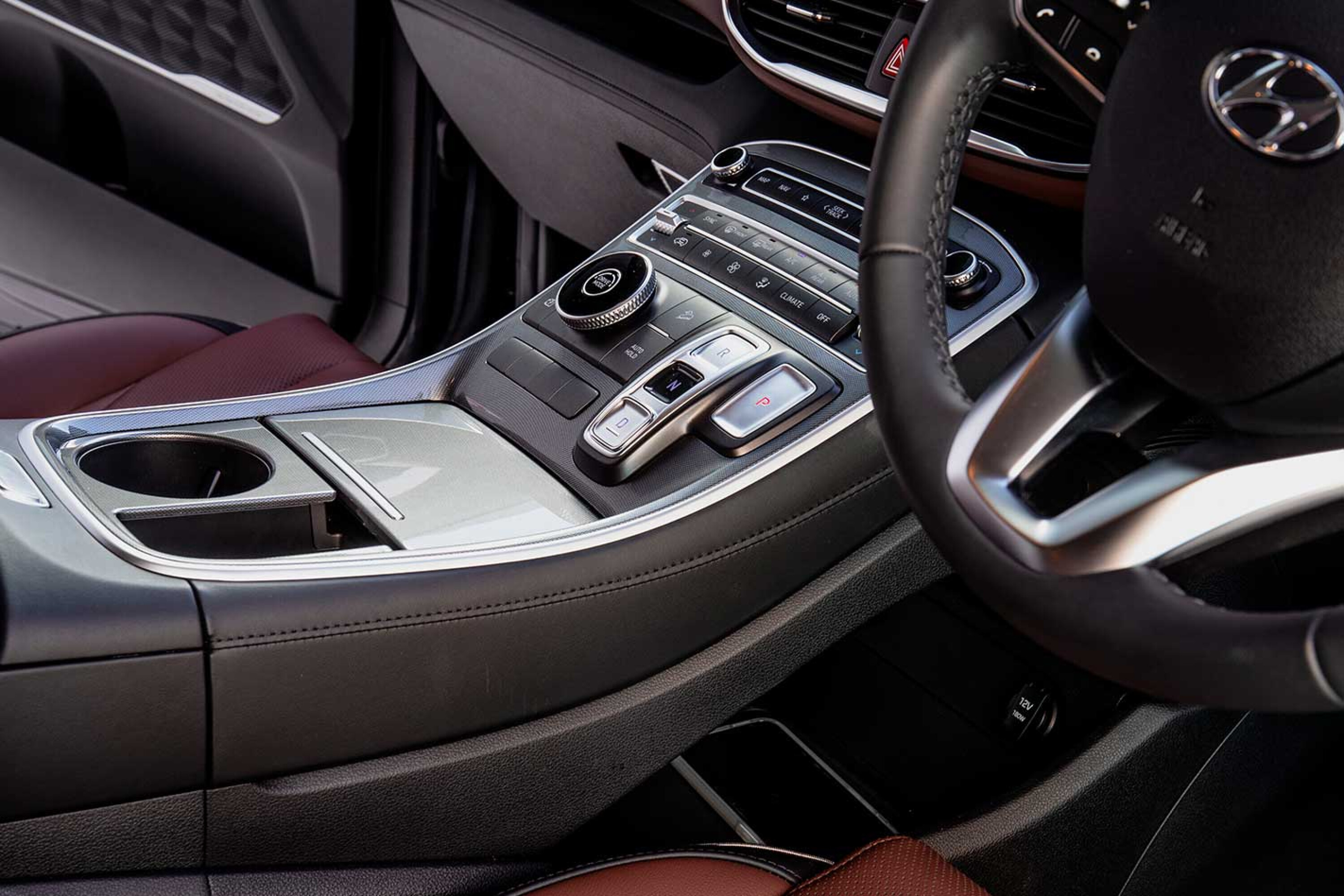
How safe is the Hyundai Santa Fe?
As is often the case with mid-life updates, the current Santa Fe is probably safer than its 2018 five-star rating suggests, having received improved auto emergency braking (AEB) with junction capability and a centre airbag in a December 2020 update that has not been evaluated by ANCAP.
Still, the Santa Fe diesel and petrol are both rated ANCAP five stars. As the hybrid models have a significant difference in drivetrain, they need to be tested separately. Hybrids, therefore, fall into ANCAP’s unrated category.
| 2023 Hyundai Santa Fe standard safety features | |
|---|---|
| Seven airbags | Driver attention monitoring |
| Lane trace assist | Lane departure warning |
| AEB with day/night pedestrian, day cyclist detection and junction AEB | Traffic sign recognition with intelligent speed limit assist |
| Auto high beam | Adaptive cruise control with stop and go |
The Active adds safe exit assist tech that detects approaching vehicles and sounds a warning chime if the door is about to open into a hazard.
Going up to the range-topping Highlander means you get low-speed reverse AEB as well as remote parking and a 360-degree surround-view monitor.
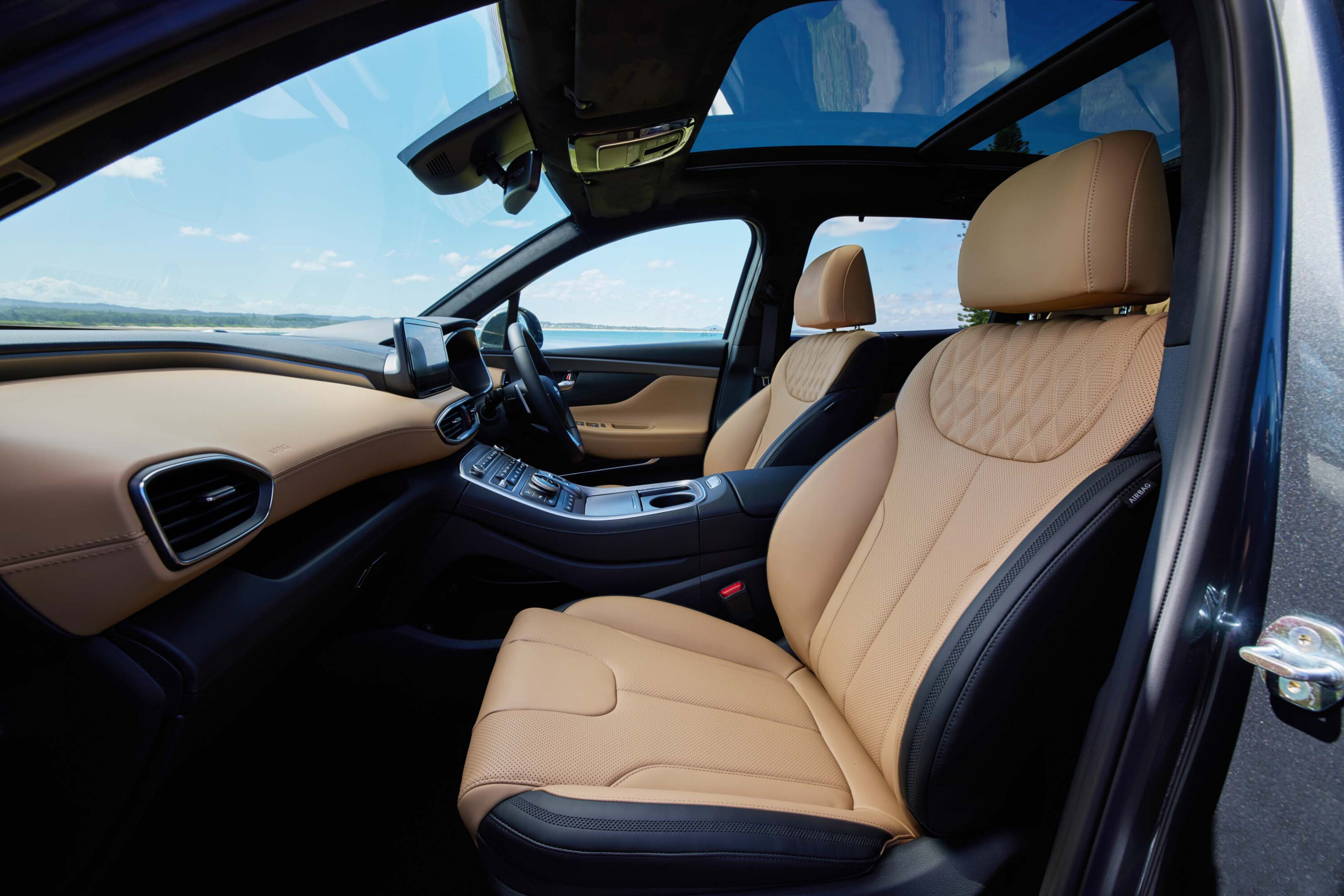
How comfortable and practical is the Hyundai Santa Fe?
The 4785mm long Hyundai Santa Fe is a relative minnow in the large SUV space, yet thanks to some neat packaging, the space on offer is greater than a Mazda CX-8 and feels competitive with a Toyota Kluger.
It was only improved mid-life with the addition of a push-button gear shift and floating centre console from Elite trim up (very similar to that in the Palisade) that liberates useful incidental storage below, with a tray big enough for a small backpack, shoulder bag, or tissue box.
Further storage includes two cup holders, a covered centre bin beneath a plush armrest and a vertical wireless charging slot that means your phone never slides out of its slot. A 12-volt socket, USB-C fast-charger and regular USB-A port (for multimedia connection) feature for additional charging.
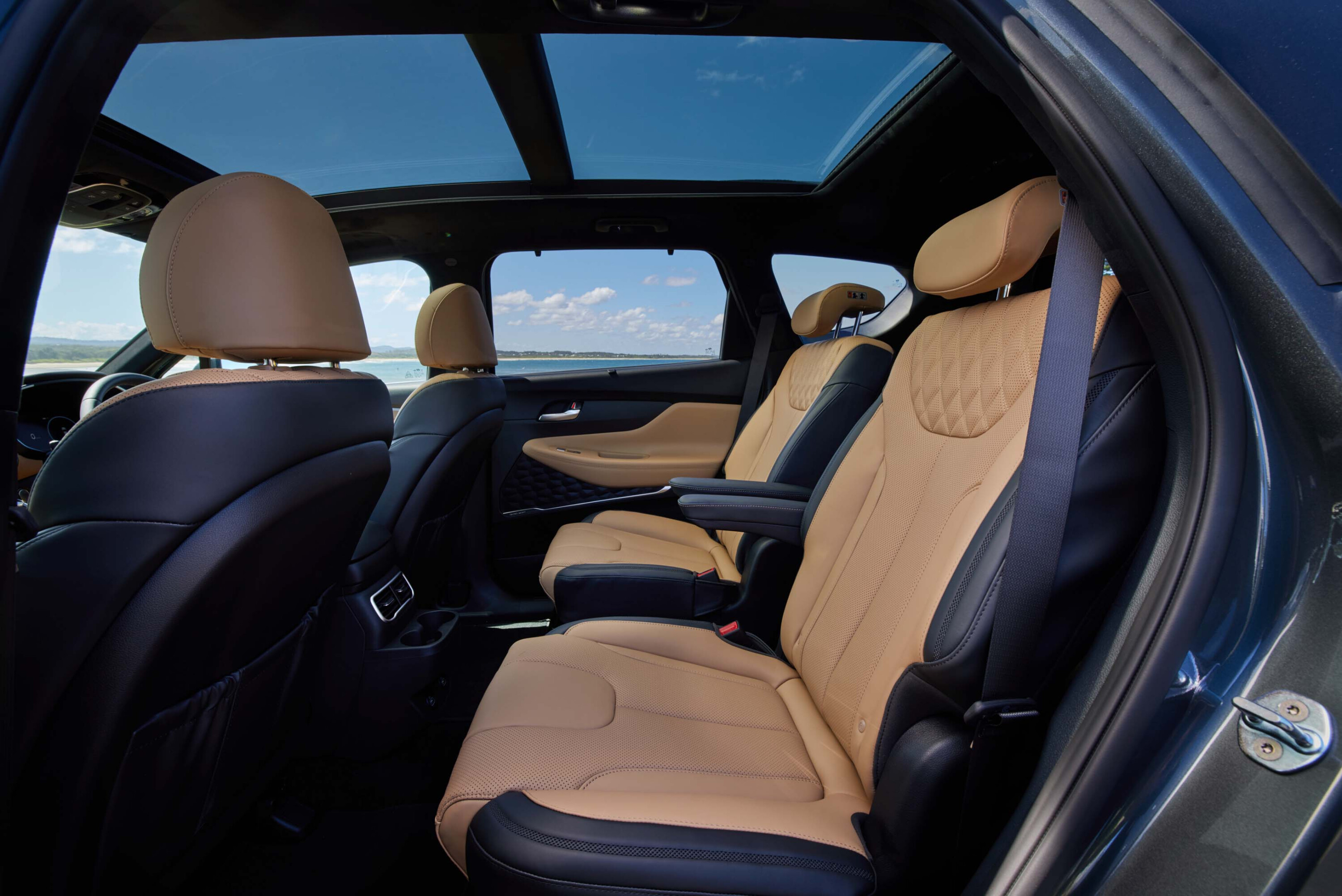
In stark contrast to its Kia Sorento relation, the Santa Fe relies on a battery of buttons for its cabin controls. A little confusing at first, the logically laid-out switches are all easy to access in practice and it makes a nice change from touchscreen-heavy interaction.
That said, Hyundai’s touchscreens are nice and responsive. The 8.0-inch unit in the lower-grade cars does look a little small in the Santa Fe, though. The higher-resolution 10.25-inch screen with in-built navigation in the upper trims is a more appropriate size.
Hyundai offers a number of colour and trim options in Elite and Highlander specs with the two-tone Camel Tan Nappa leather appointments the gem in the crown.
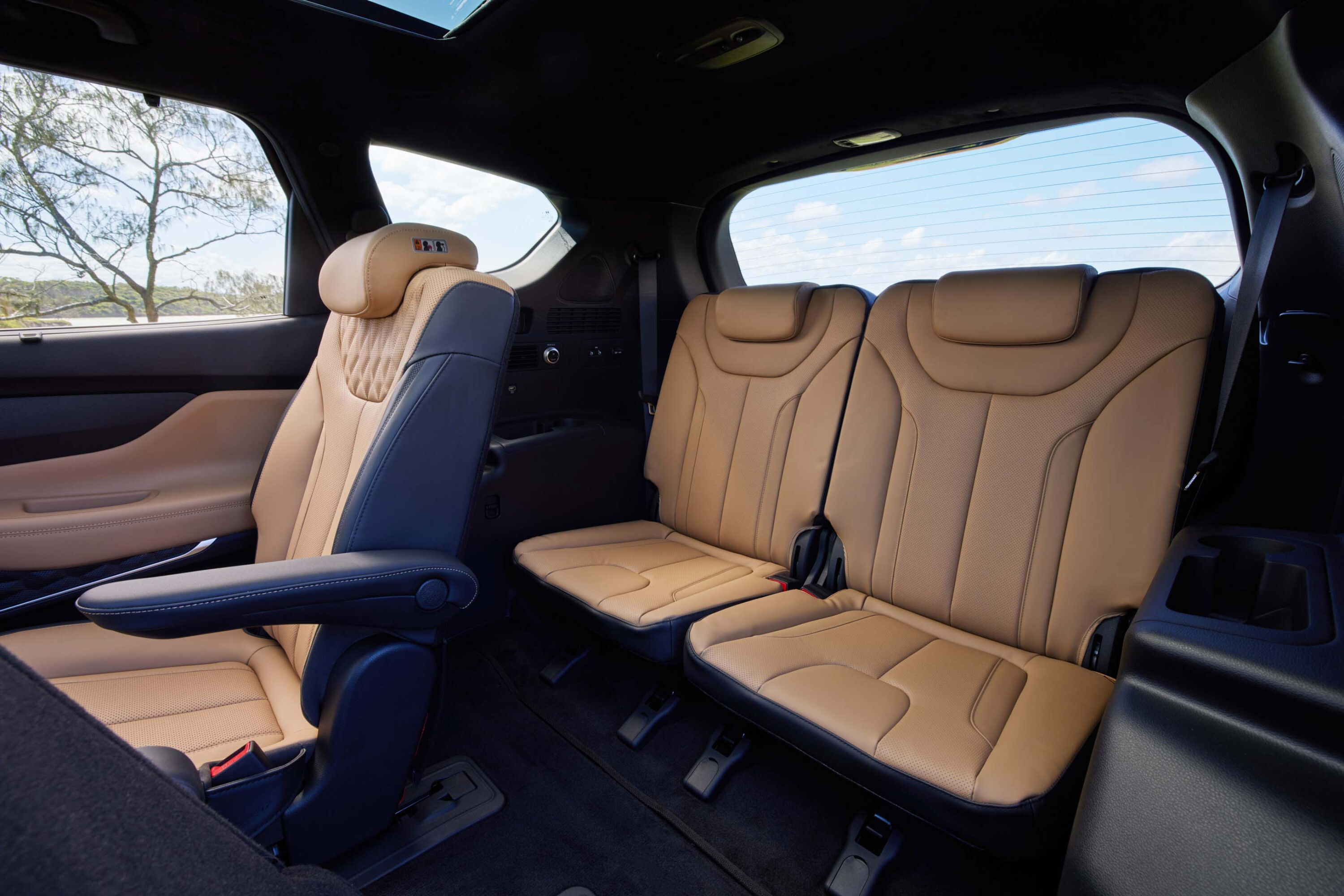
The leather even makes it onto the dashboard, where you can run your hands over it and revel in the astounding levels of plushness that Hyundai’s managed to cram into a sub-$70K seven-seater.
Even the Highlander’s real aluminium trim embellishments look classy.
The base Santa Fe’s seats are comfortable and serviceable and manual adjustment is acceptable for a car this size that starts under $50K. For private buyers, though, the Elite’s leather-appointed, heated and power-adjustable seats up the comfort levels significantly. The Highlander’s seat position memory and ventilation make it a perfect choice for Australia’s warm climate.
Front seat riders are well catered for, but Hyundai hasn’t forgotten those in second or third rows. The second-row bench is shapely and supportive with acres of legroom even for six-foot-plus occupants.
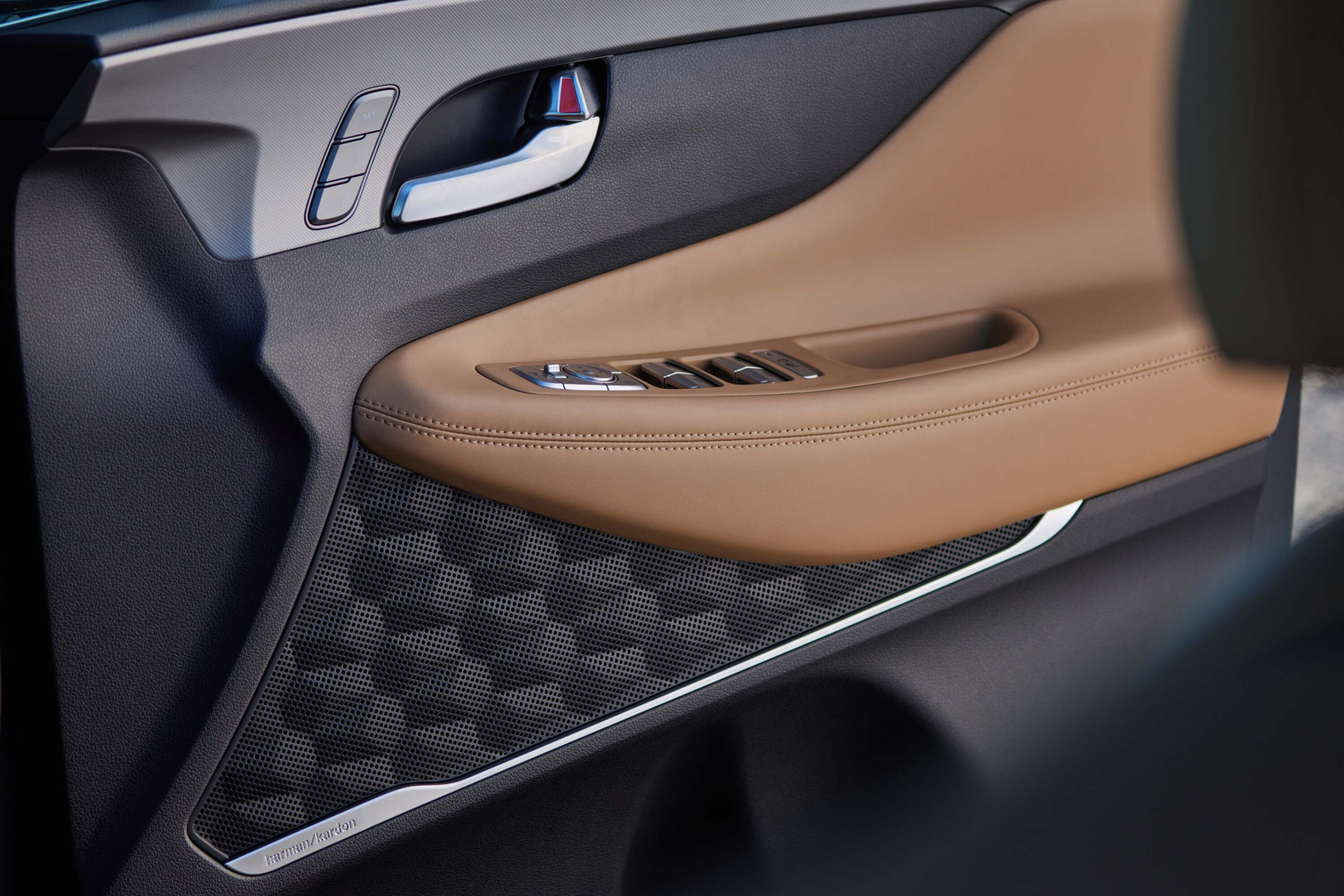
It’s also on rails with a tilting backrest, so you can balance legroom and boot space depending on your needs.
In the Highlander, rear passengers get their own climate zone, integrated sunshades (which are simply awesome), and heating for the outboard positions.
Hyundai thoughtfully includes a fold-out armrest in the 60:40 split backrest, two lots of ISOFIX anchors, three top-tether points, and two charging ports in the back of the centre console.
Accessing the Santa Fe’s third row is a simple affair thanks to electronic buttons that actuate the second row’s tilt-and-slide function. The seat is also light enough to get back into position. While the third row is intimate for adults, the Santa Fe doesn’t sacrifice much space to larger vehicles – in fact, headroom is marginally better than a Mazda CX-9.
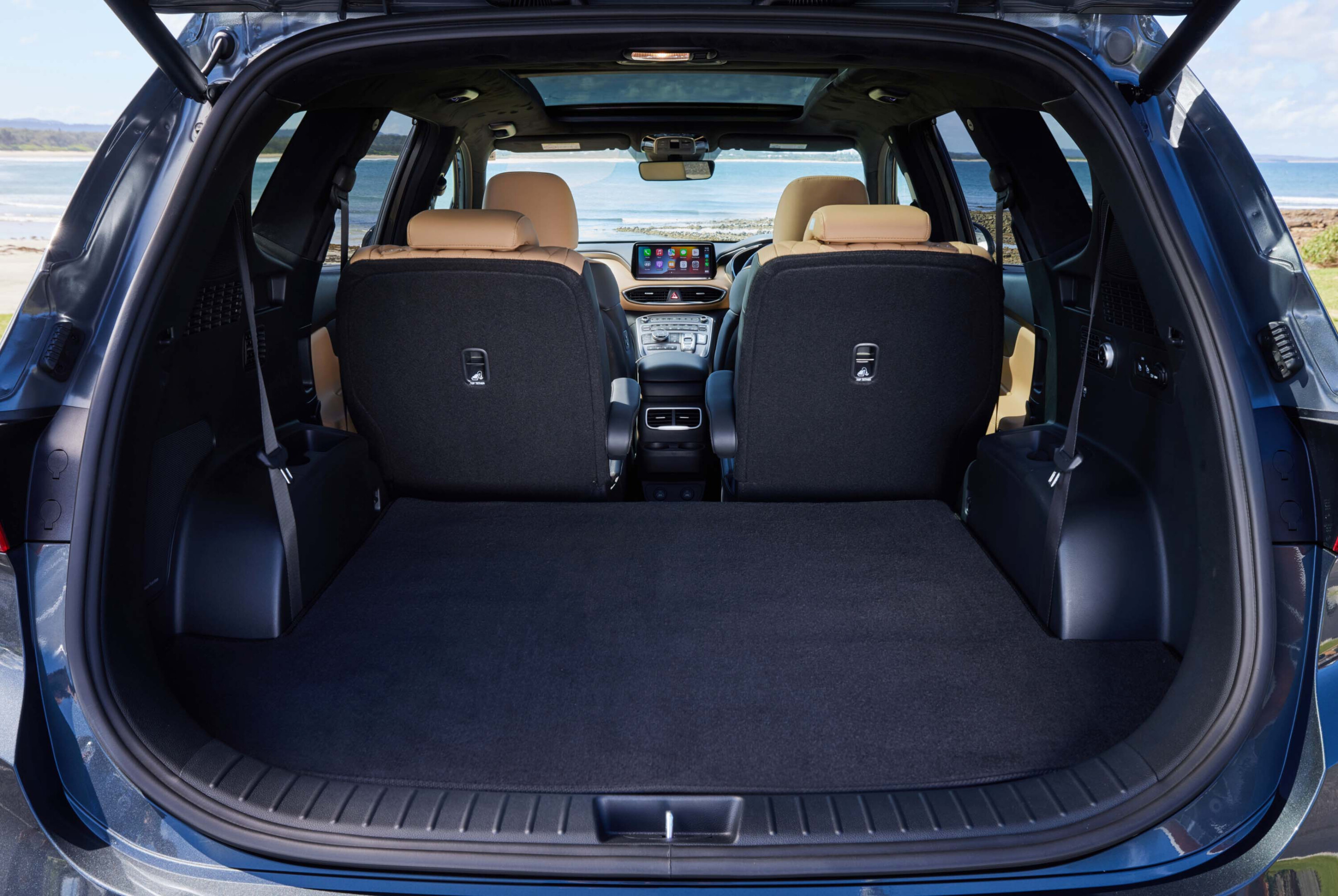
How much boot space does the Hyundai Santa Fe offer?
The Santa Fe’s boot space is not class-leading when you have all three rows raised, offering just 130L.
It’s enough for school bags but little else. With five onboard, cargo space fluctuates between a respectable 571L and a capacious 782L, depending on the bench’s position.
Thoughtful touches include underfloor storage that’s perfectly sized for the removable cargo blind and the Highlander’s accessory carpet. A power tailgate is standard from Santa Fe Elite upwards.
Hybrid Santa Fe models do suffer slightly, with some of the electrical gubbins taking up space under the boot floor (though not the battery, which lives under the driver’s seat), but it retains the same above-floor capacity and a full-size spare wheel slung beneath the Santa Fe’s body.

I like driving, will I enjoy this car?
Striking a middle ground in the segment, the Santa Fe isn’t as sporty as a Sorento or plush as a Kluger but that’s what makes it such a well-rounded SUV.
With the update in 2020, Hyundai Australia decided to accept one of the Santa Fe’s several off-the-shelf suspension tunes across the range, rather than complete a localisation program.
The latest Santa Fe is softer in rebound and feels smoother through its stroke. Approaching the Santa Fe’s limits is a little more intimidating than before with more body roll and heave, but who in their right mind is pushing a Santa Fe hard anyway?
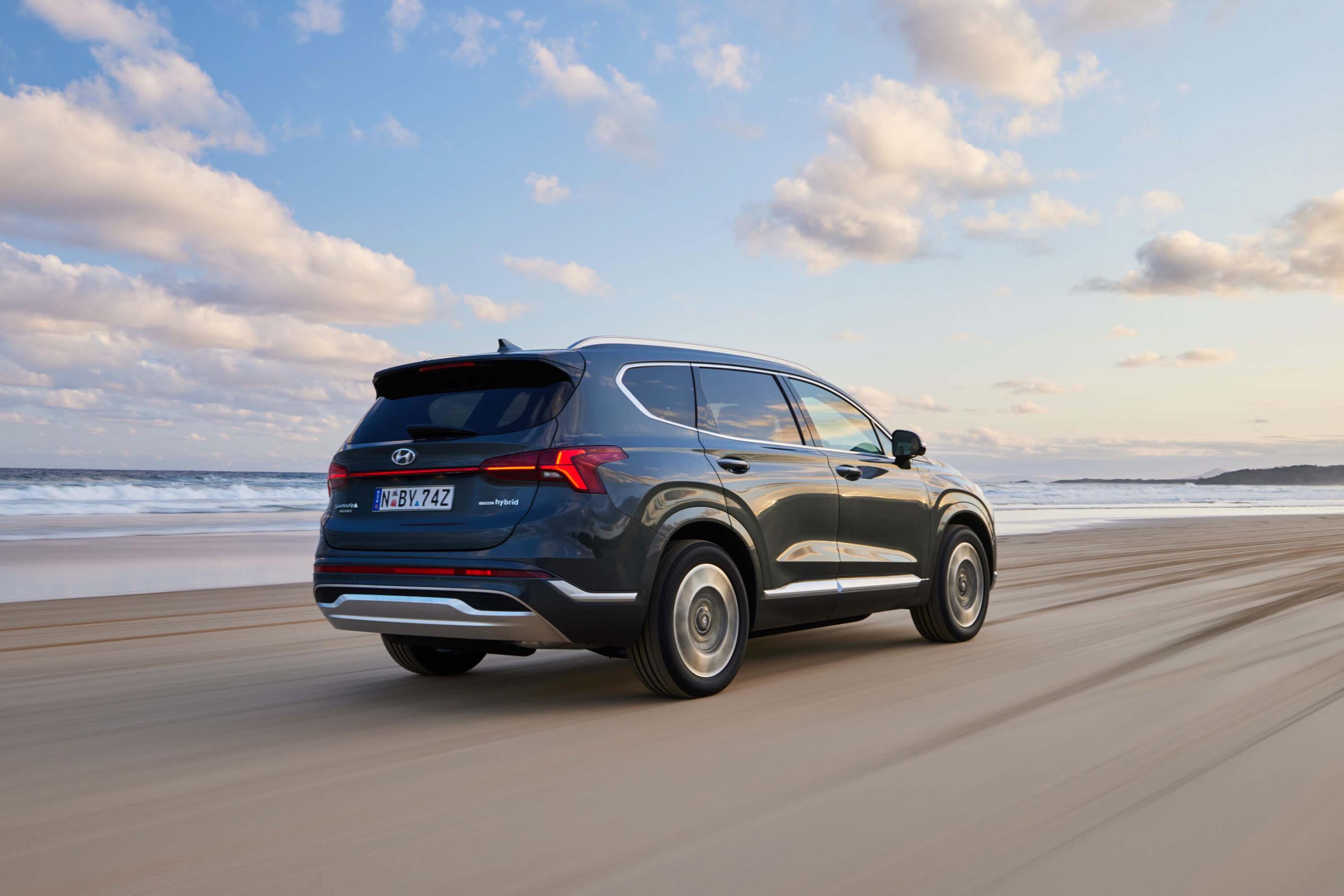
The result is that facelifted cars trade off some road-holding ability for a more relaxed ride, meaning the Santa Fe flows languidly down a road, effortlessly absorbing potholes and road imperfections in the process.
Despite a tall bonnet, forward visibility is relatively clear. Rear three-quarter vision is more compromised, so opting for a variant with a 360-degree camera is recommended if the car’s going to spend time around children.
Of its segment, the Santa Fe is the only vehicle with steering that weights up at speed to accurately reflect its heft, encouraging deference to this seven-seater’s mass. Around town, the Santa Fe’s electric power steering defaults to a lighter weight, making it easy to manouevre.
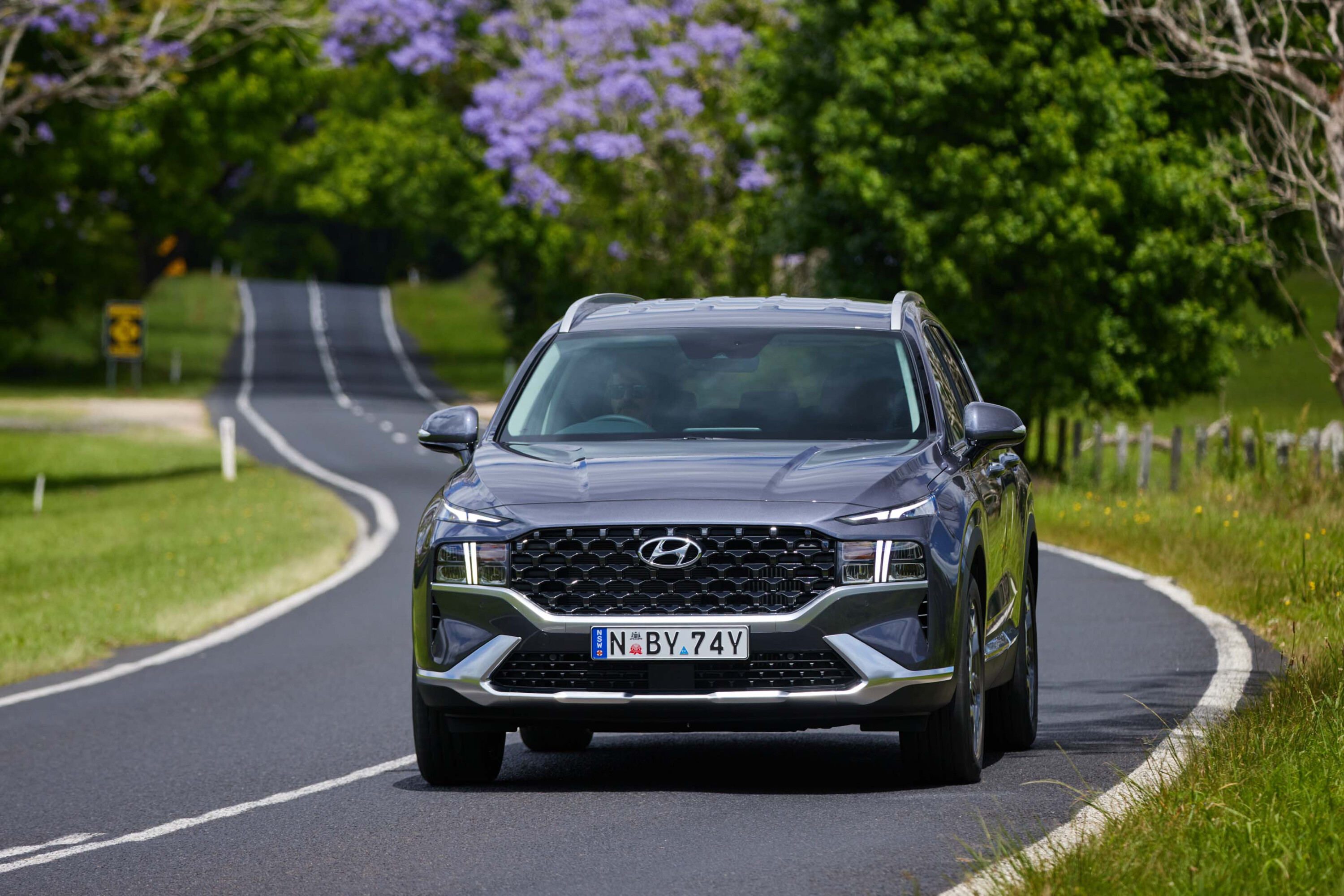
The motor is a little smoother at idle but isn’t a whole lot more hushed than the Palisade’s iron block.
As for engines, it’s a similar on-paper equation to the bigger Palisade, though the Santa Fe features an aluminium block for its 148kW/440Nm 2.2-litre turbo-diesel four-cylinder (and one extra kilowatt), hooked up to a quick and decisive eight-speed dual-clutch transmission and all four wheels.
It isn’t a whole lot more hushed than the Palisade’s iron block but the Santa Fe’s diesel is a little smoother at idle.
The other range-wide option is a 200kW/331Nm 3.5-litre petrol V6 that drives the front wheels, which can make for scrabbly getaways in wet conditions. It just erodes confidence, not to mention the V6’s thirst for petrol.

If you want an all-wheel drive petrol then the only option is the newly-added (November 2022) hybrid available in Elite and Highlander trims.
This puts out 169kW and 350Nm with a 1.6-litre turbo-petrol four-cylinder hooked up to a six-speed automatic with a 44kW electric motor sandwiched in between.
Although not as smooth or powerful as Toyota’s hybrid powertrains, the Santa Fe’s petrol-electric option is worth considering if you intend to use your SUV mainly in the suburbs.
We’ve found it to deliver efficiency and refinement in town, but its lack of mid-range torque compared to the diesel makes it a less effortless country cruiser.
If any of the terms in this section have left you scratching your head, these articles will help bring you up to speed!
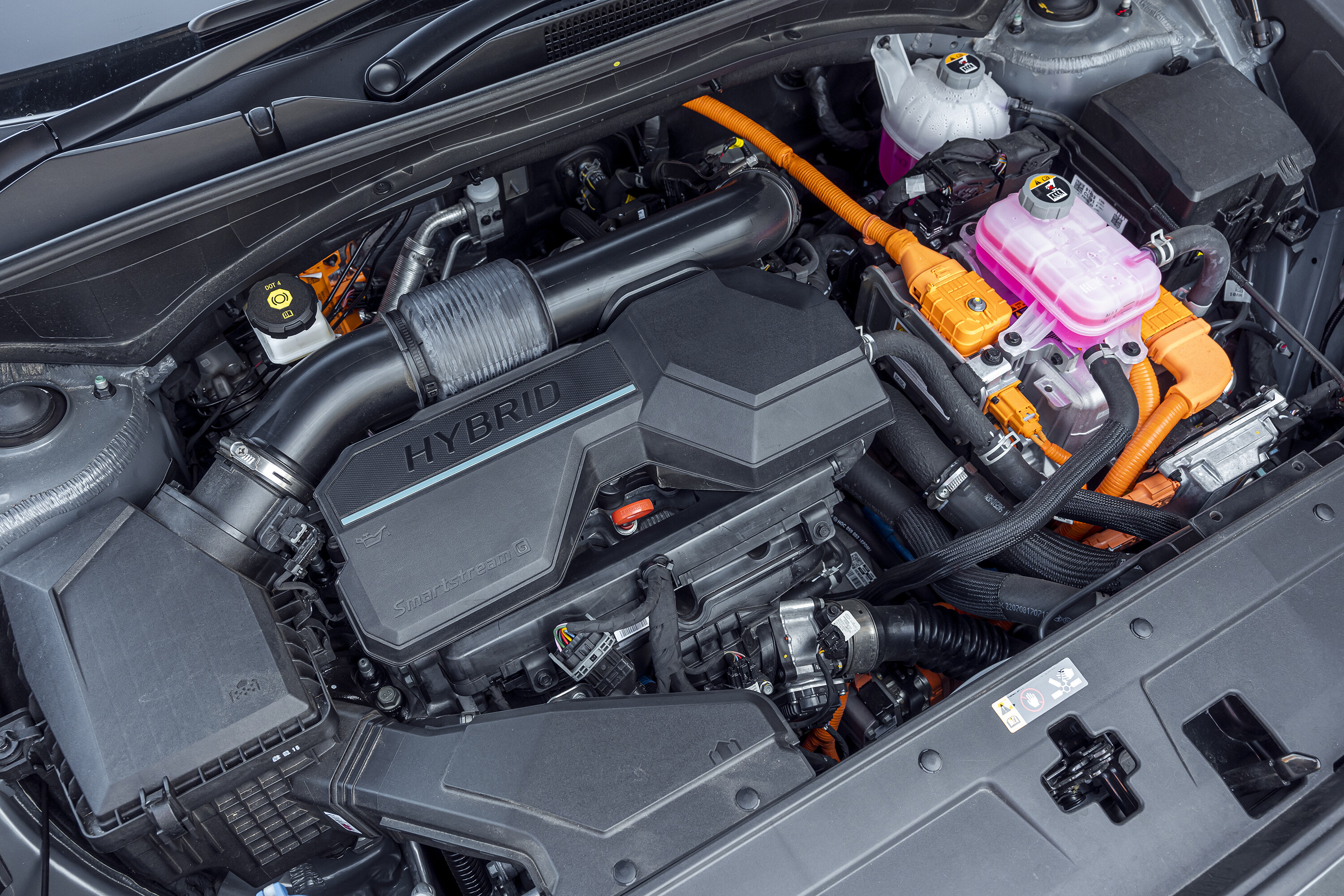
- What is a Powertrain or Drivetrain?
- Power vs torque
- Car suspension explained
- Automatic transmissions (‘gearboxes’) explained
- Chassis control systems explained
- Car vs Ute vs SUV: How the vehicle you buy should guide the way you drive
If you want to save at the bowser, don’t buy the multi-point injected V6 as it consumes 10.5L/100km in the combined ADR cycle and a frightening 14.7L/100km in the urban test.
As for the other two powertrains, it’ll depend on your particular use case. The petrol-electric hybrid does its most efficient work around town where it draws close to Hyundai’s official 6.0L/100km combined result, though open roads will see that spike to 7-9L/100km, depending on the terrain.
If you’re a customer that regularly travels long distances on freeways and highways, the diesel’s 6.1L/100km claim is an achievable figure. In fact, you’ll drop below that on 80km/h-100km/h stretches with a gentle foot.
| 2023 Hyundai Santa Fe Powertrain | Combined fuel economy (ADR 81/02) | CO2 emissions |
|---|---|---|
| 3.5-litre multi-point injected petrol V6 | 10.5L/100km | 244g/km |
| 2.2-litre turbo-diesel four-cylinder | 6.1L/100km | 160g/km |
| 1.6-litre petrol-electric hybrid | 6.0L/100km | 137g/km |
What is the Hyundai Santa Fe’s towing capacity?
The Hyundai Santa Fe diesel and V6 are rated to tow a 2500kg braked load, and certified up to 200kg tow ball down weight.
Hybrid variants are rated lower, topping out at 1650kg braked with a maximum 100kg down weight. All can tow a 750kg unbraked load.
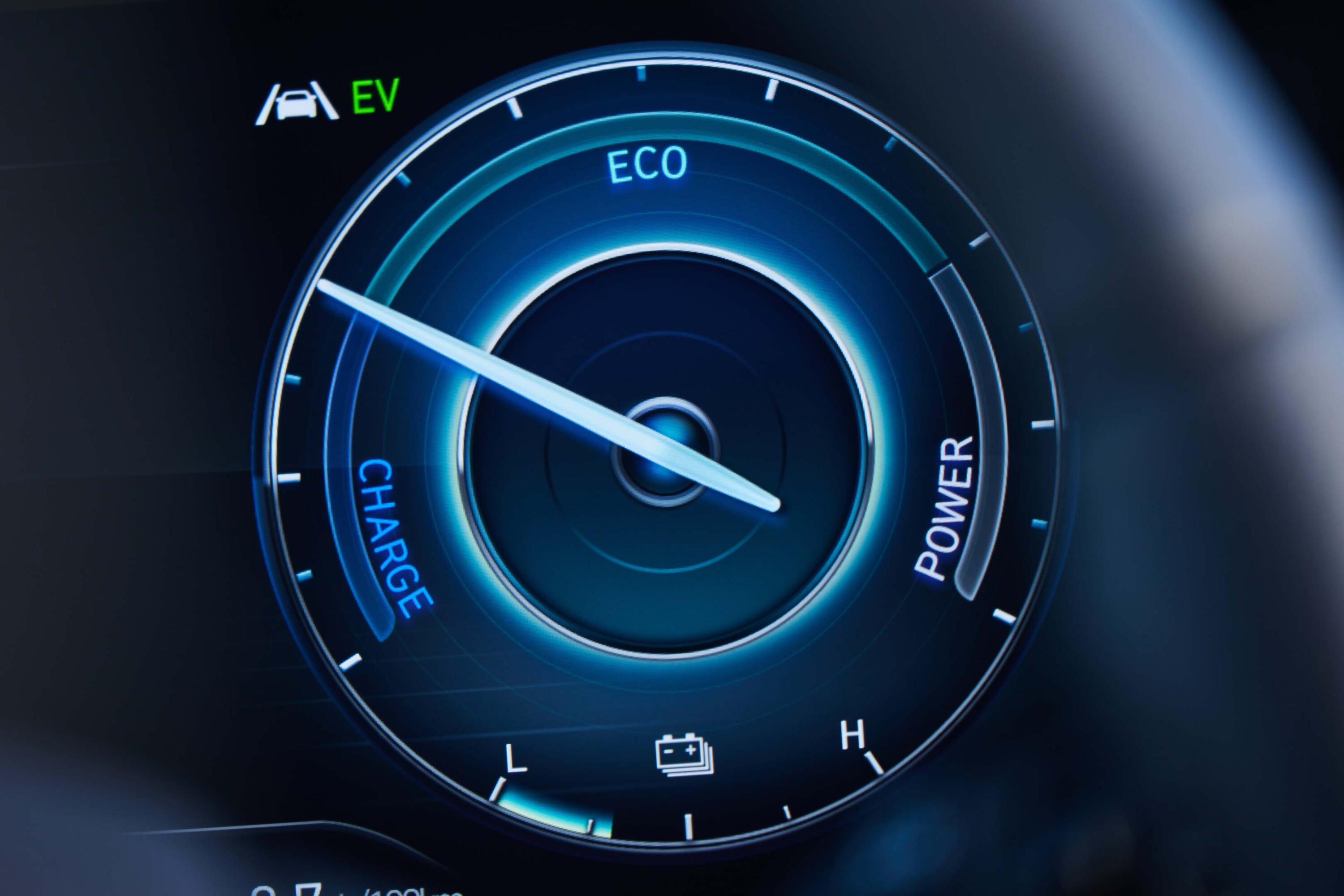
How long is the warranty and what are the Hyundai Santa Fe’s servicing costs?
The Hyundai Santa Fe is covered by a five-year/unlimited-kilometre warranty. Hybrid variants’ 1.49kWh batteries and high-voltage electrics get an additional eight-year/160,000km guarantee.
Maintenance pricing for the first five years falls under Hyundai’s capped-price servicing incentive. Petrol and diesel variants require servicing annually or every 15,000km, while the hybrid’s turbo-petrol engine needs to see a spanner a little more regularly, with 10,000km intervals.
Petrol and diesel servicing costs $2495 for five years/75,000km, an average of $499 annually. You can pre-pay at purchase and roll the cost into your finance, or pay as you go.
Hybrid servicing is more affordable, costing $2295 for five years/50,000km, or $459/year on average provided you don’t breach 10,000km a year.
| Powertrain | Service Interval | Five-year cost | Average service cost |
|---|---|---|---|
| Petrol V6 | 12 months/15,000km | $2495 | $499 |
| Turbo-diesel | 12 months/15,000km | $2495 | $499 |
| Hybrid | 12 months/10,000km | $2295 | $459 |
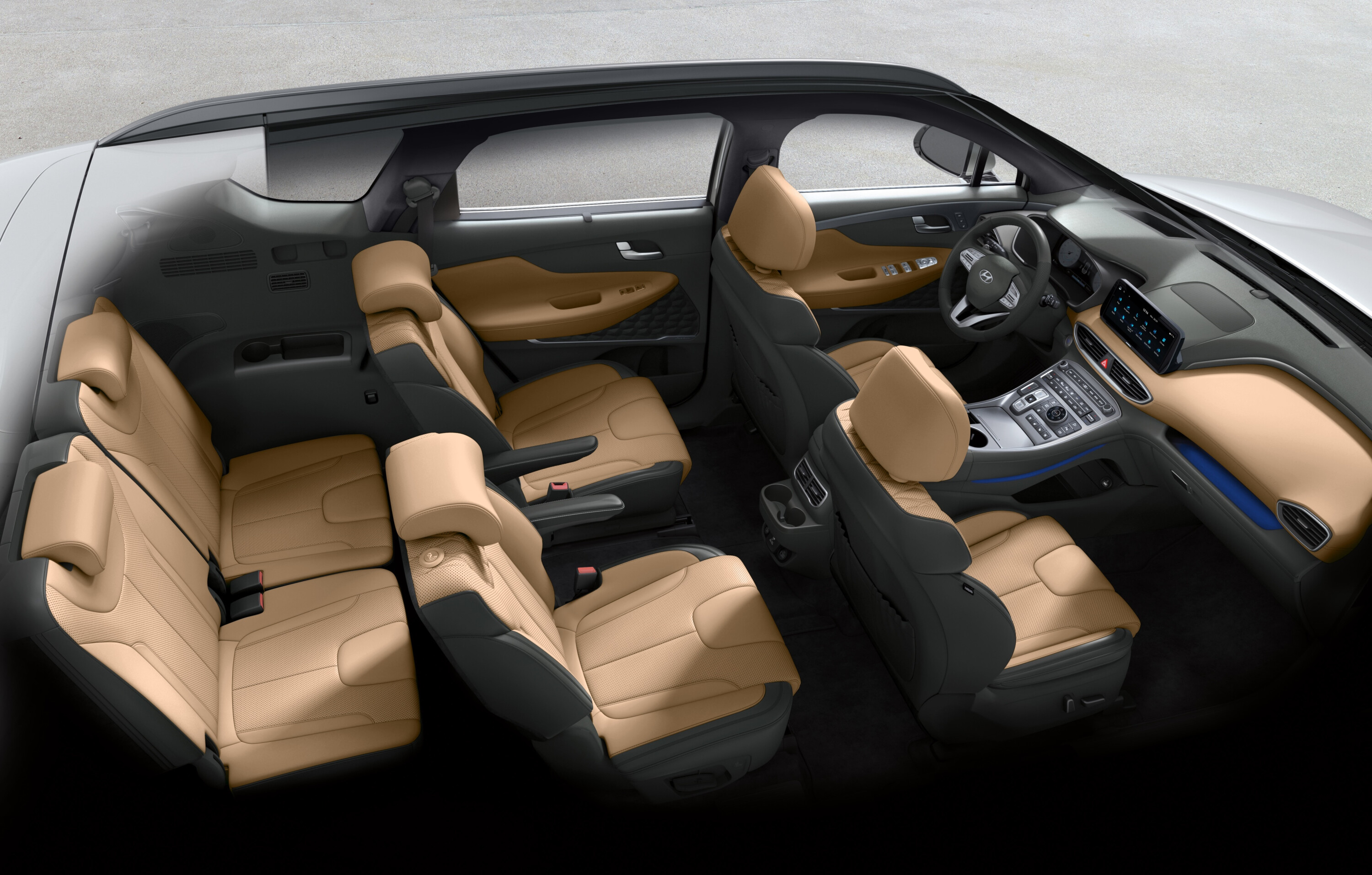
Which version of the Hyundai Santa Fe does Wheels recommend?
The Santa Fe range is broad, and each variant offers an awful lot for its asking price. It’s therefore largely up to how much you have to spend and your personal preferences. Naturally, though, we have some recommendations.
Firstly, skip up the range a little to the Elite if you can. It’s a sizeable price jump from base spec, but it’s also a big leap forward in terms of cabin presentation and level of equipment. When it comes to engines, AWD is a near non-negotiable for us. The diesel is pretty refined for its kind and the transmission is excellent.
Going for one of the top two grades also brings the option of hybrid power, which suits city dwellers and suburbanites. Those out in the country will get lower consumption from the diesel and it tows better than the petrol-electric Santa Fe.
What are the Hyundai Santa Fe’s key rivals?
- Toyota Kluger
- Kia Sorento
- Mazda CX-8
- Skoda Kodiaq
- Nissan Pathfinder
- Mitsubishi Outlander
- Nissan X-Trail
- Hyundai Palisade
- Mazda CX-9
What might annoy me?
Aside from some small idiosyncrasies, such as the lack of wireless Apple CarPlay and Android Auto in the top trims and that frustrating speed limit assist that beeps incessantly on the hybrid, precious little.

What’s the infotainment system like?
The base and Active’s small 8.0-inch screen is serviceable but nothing special, save for the inclusion of now-quite-reliable wireless Apple CarPlay and Android Auto.
Standard digital instruments have drawn both criticism and praise; while they might not look classic like analogue dials, they display info clearly and concisely.
Moving through to the Elite trim adds a large 10.25-inch touchscreen and navigation at the cost of wireless phone mirroring. The Elite also drops a high-resolution 12.3-inch digital instrument panel ahead of the driver.
The Highlander has the same package (and a cranking 10-speaker Harman Kardon sound system) but with a devilishly clever blind-spot camera system that pops a view of your blind spot up in the digital dash display when indicating.

Where does Hyundai make the Santa Fe?
Right-hand drive Hyundai Santa Fe models are manufactured for Australia in South Korea.
Are there plans to update the Hyundai Santa Fe soon?
A new-gen Hyundai Santa Fe is expected to arrive in 2024. Spy shots and sightings have given us an idea of what to expect – you can see our artist’s impressions here.
We’re pretty certain the new-gen car will retain combustion power in some form, potentially with the addition of next-generation hybrid tech from Hyundai. The fully-electric seven-seat SUV is more likely to come in the form of a future Ioniq 7 model related to the Kia EV9.
Score breakdown
Things we like
- Smart interior packaging and thoughtful touches
- Cabin refinement
- Diesel’s slick and snappy eight-speed
- Highlander’s appointments feel premium
Not so much
- Petrol V6 is thirsty
- Hybrid’s average open-road efficiency
- Curtain airbags don’t cover third row



